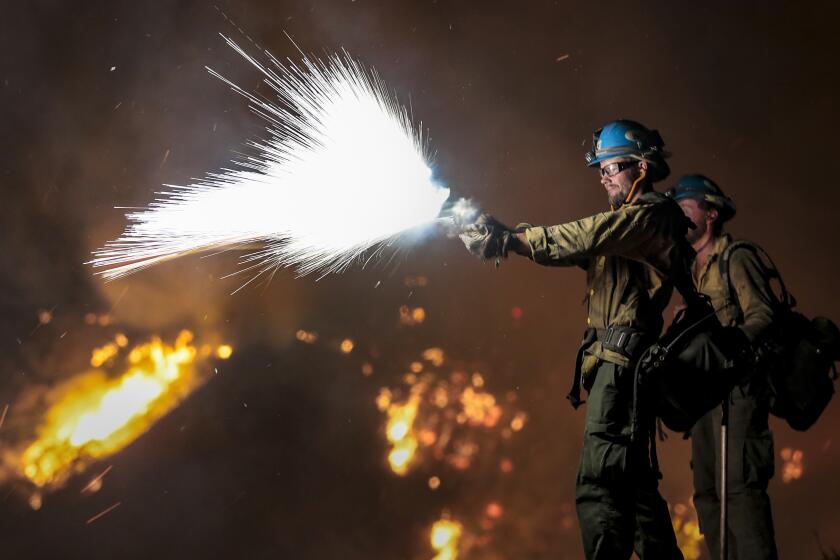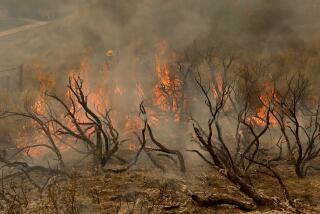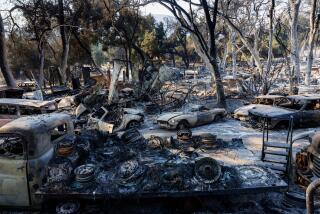Bobcat fire grows to 103,000 acres, making it one of L.A. County’s largest blazes ever
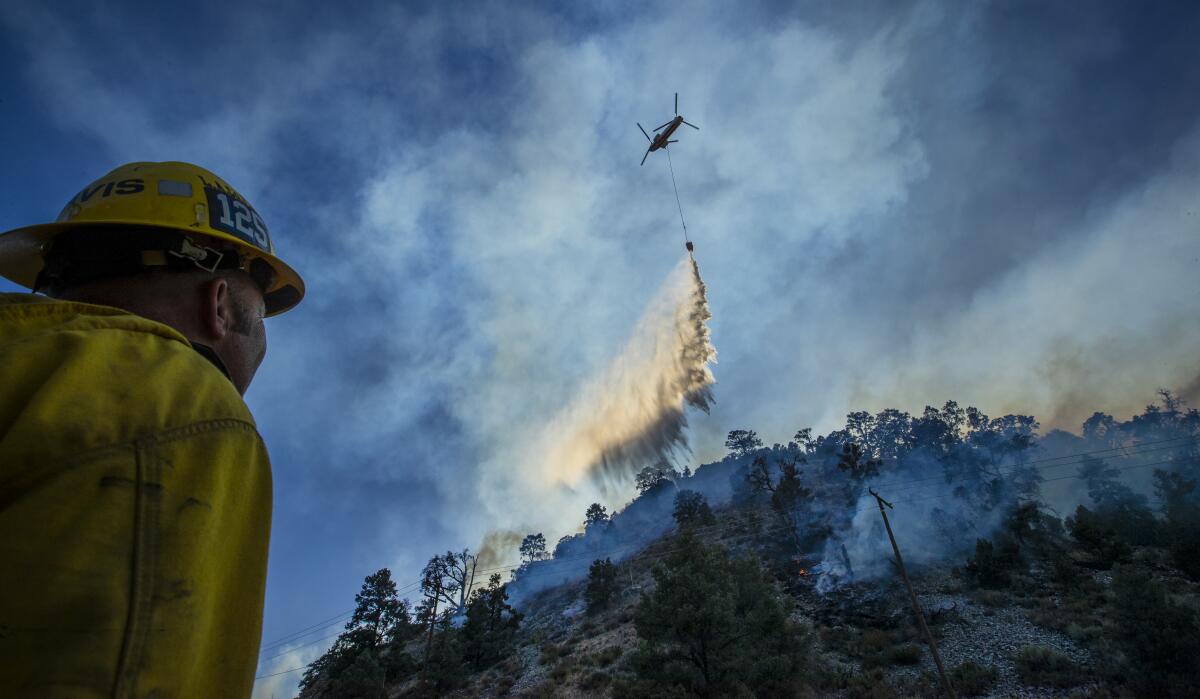
Tim Wheeler, 62, a school building maintenance worker, didn’t know what to expect when he drove up to the corner of Longview and Pallet Mesa roads in Juniper Hills late Sunday morning.
His single-story home was in the path of the Bobcat fire when he last saw it Thursday.
For days he had been watching the fire creep toward the desert enclave.
The blaze was burning on the nearby hillsides Wednesday. The next morning, the wind shifted, blowing fire deeper into Juniper Hills. Flames made their way along Pallet Creek, across from Wheeler’s home. Embers were igniting hot spots ahead of the fire.
Wheeler, a U.S. Navy veteran, said he grabbed whatever valuables he could and drove off in his black Chevy SSR.
Fears of a significant spread of the Bobcat fire dissipated as Santa Ana winds failed to materialize, but foothill communities remain on high alert.
As he sped away, he looked back and saw the fire approaching his home.
“If God wants to take my home then he’ll take it,” he recalled thinking as he drove.
The Bobcat fire has grown to more than 103,000 acres, making it one of the largest wildfires in Los Angeles County history. The blaze continued to threaten some desert communities as well as the Mt. Wilson Observatory in the San Gabriel Mountains on Sunday.
The fire was no longer bearing down on foothill communities such as Arcadia and Monrovia to the south, but it continued to move into some remote areas in the Antelope Valley to the north, destroying homes and prompting numerous evacuations, officials said.
“We’re still in the thick of a good firefight,” Andrew Mitchell, public information officer with the U.S. Forest Service, said Sunday.
There were flare-ups overnight around Mt. Wilson, but firefighters on the ground and in the air were able to prevent any losses there, officials said.
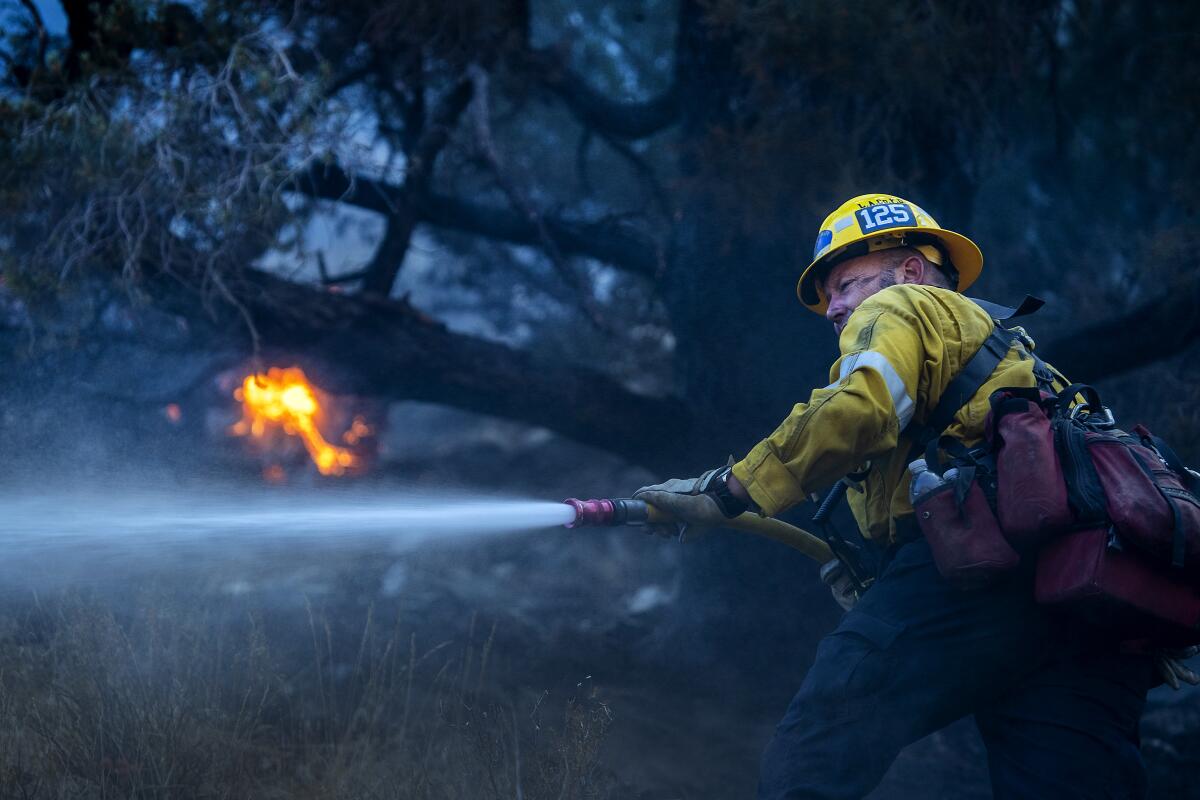
The fire has burned 103,135 acres and is only 15% contained, officials said. Fire officials were hoping that lower temperatures and calmer winds expected Monday and Tuesday might give them a chance to get the upper hand on the blaze.
“I think the next couple days we’ll start to really get a handle on this fire because the conditions will be right and we’ll be able to really start backing it with all our assets,” Mitchell said. He noted the number of people fighting the fire has steadily increased to more than 1,600, with help coming from as far as New York.
Fueled by gusty winds, the fire more than doubled in size in just a few days, growing nearly 20,000 acres from Friday to Saturday alone and making an aggressive push to the north.
The blaze chewed through an immense swath of the Angeles National Forest, becoming one of L.A. County’s largest in terms of acres burned.
The county’s largest fire, the Station blaze in 2009, burned 160,000 acres in the same Angeles National Forest area, killing two firefighters and destroying more than 200 structures.
The 2018 Woolsey fire burned 96,000 acres in L.A. and Ventura counties, destroying more than 1,600 structures and killing three people. The 1970 Clampitt fire in the northern San Fernando Valley burned 105,000 acres and killed four people.
The extent of the destruction wreaked by the Bobcat fire wasn’t immediately clear.
Crews still hadn’t been able to go out and perform a damage assessment as of Sunday morning, as firefighters were continuing to defend homes from flames, said Larry Smith, public information officer with the U.S. Forest Service.
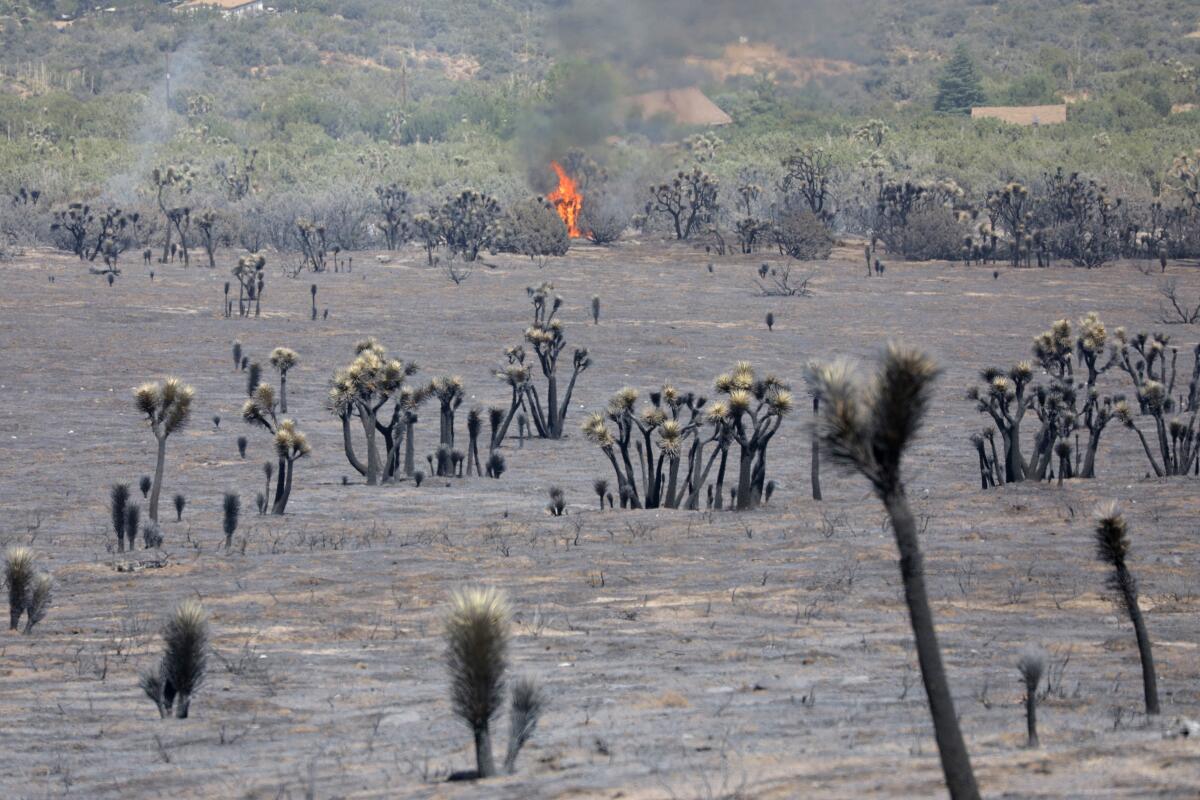
“At this time we’re just focusing on catching this thing,” Smith said.
Crews were also racing to put out hot spots, at times with the help of bystanders.
Melina Castillo was driving along Big Rock Creek Road, just past Valyermo, when she and her 65-year-old father, Manuel Castillo, noticed heavy smoke and flames.
“There’s some shovels in the back of the truck, and we’ve got to put it out,” she said.
The father and daughter, who had been on their way to check on their nearby vacation home, grabbed three buckets from the back of their silver Toyota Tundra. They ran across the creek, which they used to fill the buckets with water to douse the flames.
For about 15 minutes or more, they carried buckets of water from the creek to the flames. During one trip, Manuel Castillo saw a firefighter driving by and ran over to tell him flames were burning behind some homes.
The firefighter sped off in his pickup truck to seek more help while other firefighters noticed the smoke and flames and pulled over, using shovels to throw dirt on the fire.
Within minutes, the flames had been put out. Firefighters thanked the Castillos for helping to save two homes.
For Wheeler in Juniper Hills, Thursday marked the first time he had been forced to evacuate his home in the 28 years he’s lived there.
There had been brush fires before, but firefighters had managed to knock them out. Even when the Station fire threatened the community, the firefighters had managed to keep it at bay.
But this fire was different. For up to 15 minutes the winds had pushed the fire down, burning homes, power lines and cars.
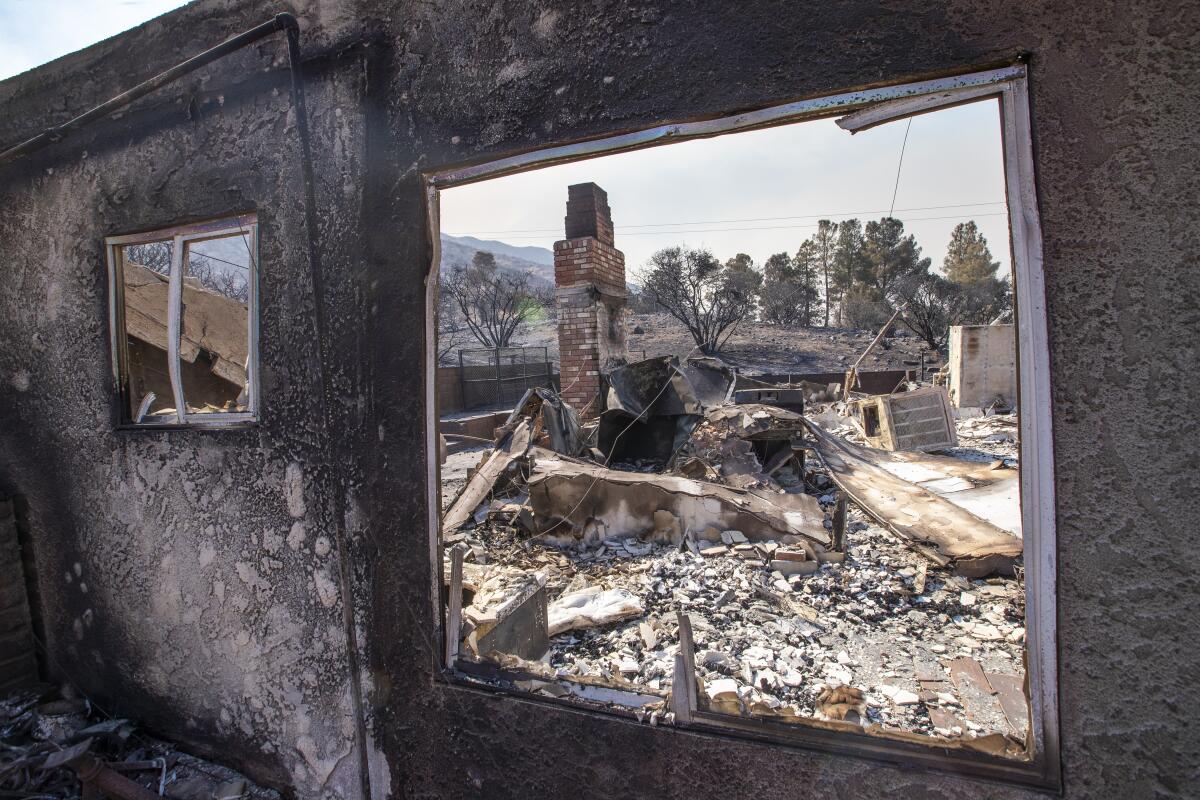
Wheeler said he drove down and parked off the road. He said that the evacuation center was too far for him and that he didn’t have enough money to get a hotel. So he slept on top of his truck bed until Sunday morning, when he drove back up the road and saw how far the fire had reached, which homes had been saved. Then he saw his blue house. It was standing.
“I’m thankful to God he kept it safe,” he said.
But it wasn’t just God he thanked. He knew the firefighters had worked hard to keep many homes in the area from burning down.
“L.A. County Fire saved my home,” he said. “They saved this place.”
Standing outside his home, he saw that flames had burned the corner of his 5-acre property. That was the extent of the damage.
The Bobcat fire was one of 27 major wildfires that nearly 19,000 firefighters were battling across the state Sunday, according to the California Department of Forestry and Fire Protection.
The fires together have killed 26 people and destroyed more than 6,100 structures since mid-August, Cal Fire said.
Fifteen deaths have been linked to the North Complex fire, which had burned over 293,000 acres in Butte, Plumas and Yuba counties as of Sunday. Crews reported progress, with containment increasing from 58% Saturday to 64% by Sunday night.
To the south, a firefighter died last week while battling the El Dorado fire in the San Bernardino National Forest.
That fire, which officials say was sparked by a pyrotechnic device used during a gender reveal party, had burned 22,489 acres and was 59% contained Sunday, down from 66% last week. The drop in containment reflected both the growth in acreage and a controlled burning operation that caused part of the fire line to be reclassified from contained to uncontained, said Cathey Mattingly, public information officer with Cal Fire in San Bernardino.
Firefighters were hoping to take advantage of a couple of days of calm winds and better humidity to get a handle on the blaze.
“But the long-term forecast is expecting some more possible wind activity later in the week,” Mattingly said, “so we’re just kind of taking it day by day right now.”
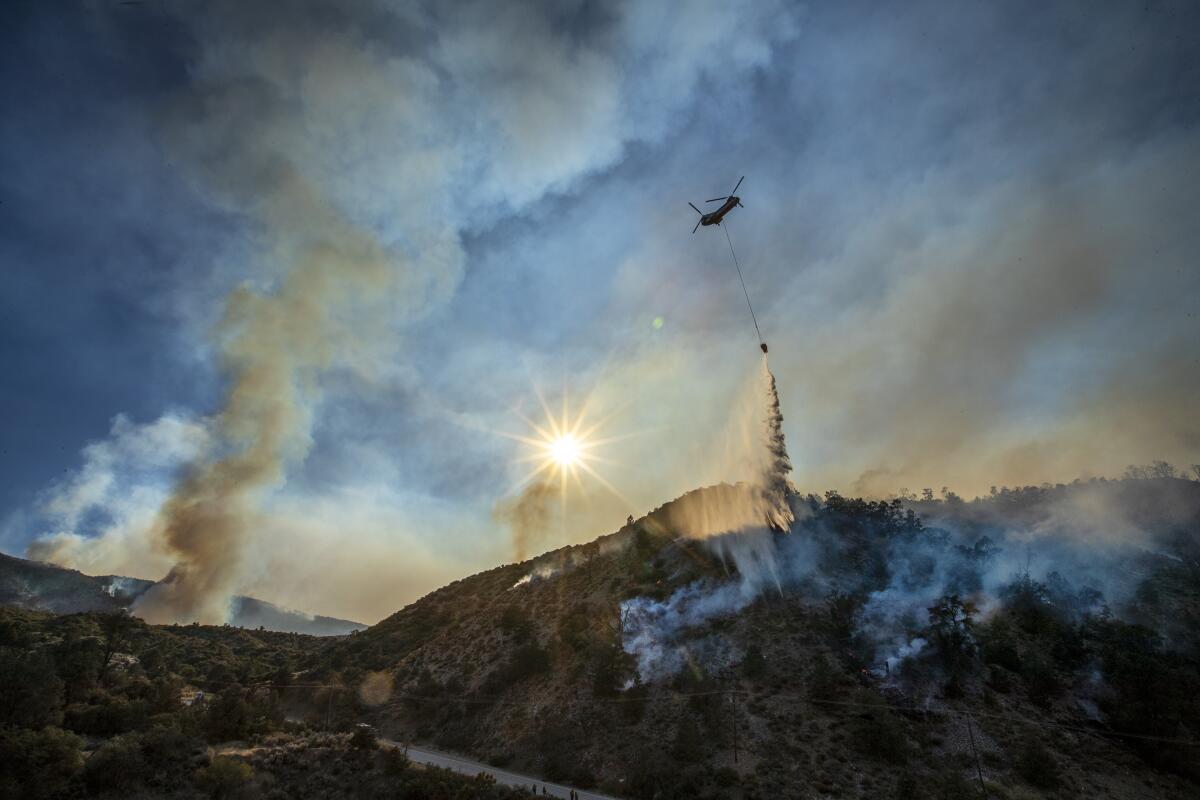
More to Read
Sign up for Essential California
The most important California stories and recommendations in your inbox every morning.
You may occasionally receive promotional content from the Los Angeles Times.
